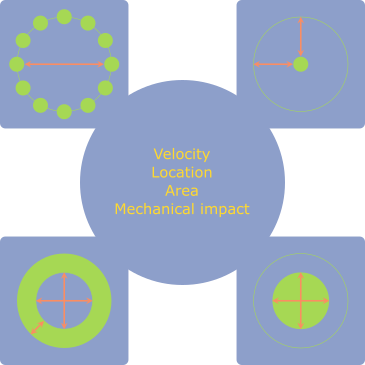
Stem cross-sections (top) and tomograms (bottom) of spruce trees. From: Rust (2017)
Background
Acoustic tomograms are widely used in tree risk assessment. They should be accurate, repeatable and comparable between consecutive measurements. Previous work has failed to address the effects of different approaches to record sensor positions, operators and models of tomograph on the resulting tomograms.
Methods
In a study published in the Journal of Forest and Landscape Research, three operators used the two most common sonic tomograph models to measure seven cross-sections of Norway spruce trees, which were felled after the measurement. We evaluated the effects of model, operator, and different approaches to measure sensor positions on the quality of the tomograms.
Results
The largest source of error was the precision with which the position of sensors was measured, affecting estimated stress wave velocity, the size of the defect, and the estimated loss in load carrying capacity.
Conclusion
To produce accurate and repeatable tomograms of trees with complex shapes, it is essential to measure the sensor positions precisely.

Accuracy of sensor positions affects several affects of tomography.
Further reading
Rust, Steffen. 2017. “Accuracy and reproducibility of acoustic tomography significantly increase with precision of sensor position”. Journal of Forest and Landscape Research 2 (1).
Rust, Steffen. 2020. “Comparison of methods to measure sensor positions for tomography”. Arboricultural Journal, 1–7.
Rust, Steffen. 2022. “Reproducibility of Stress Wave and Electrical Resistivity Tomography for Tree Assessment”. Forests 13 (2): 295.